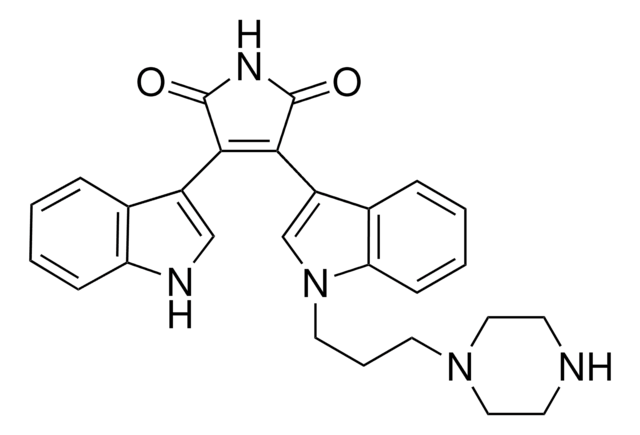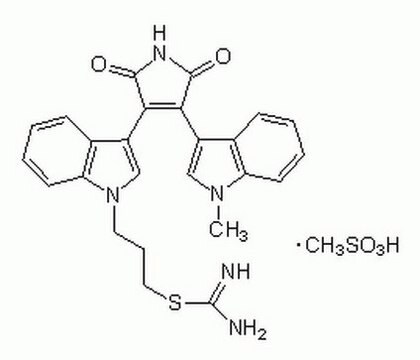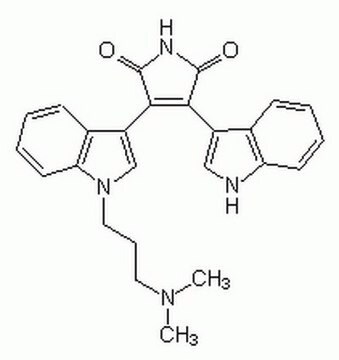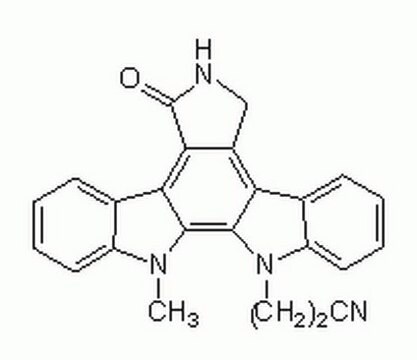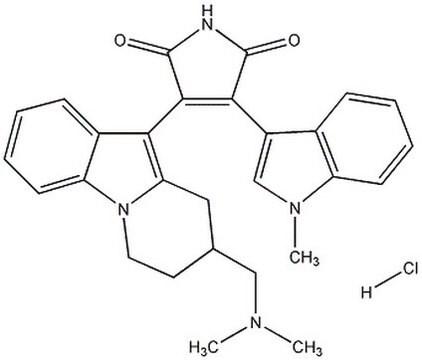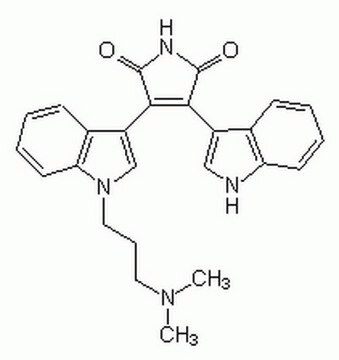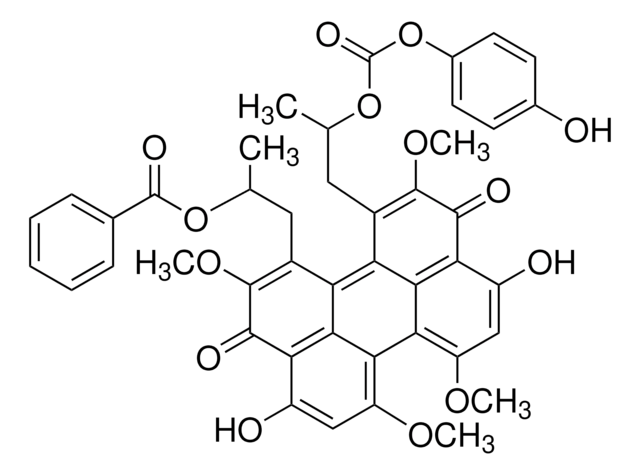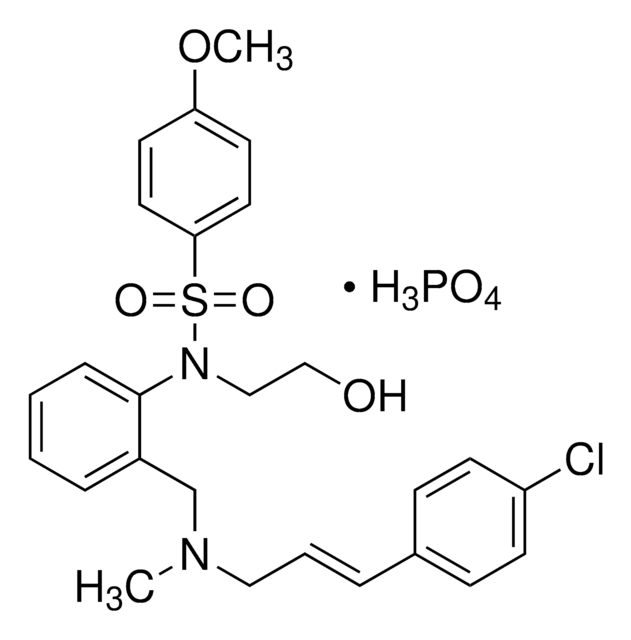B3056
Bisindolylmaleimide II
≥97% (Mixture of 2 isomers)
About This Item
Produits recommandés
Source biologique
synthetic (organic)
Niveau de qualité
Essai
≥97% (Mixture of 2 isomers)
Forme
powder
Solubilité
DMSO: soluble
ethanol: soluble
Conditions d'expédition
dry ice
Température de stockage
−20°C
Chaîne SMILES
CN1CCCC1CCn2cc(C3=C(C(=O)NC3=O)c4c[nH]c5ccccc45)c6ccccc26
InChI
1S/C27H26N4O2/c1-30-13-6-7-17(30)12-14-31-16-21(19-9-3-5-11-23(19)31)25-24(26(32)29-27(25)33)20-15-28-22-10-4-2-8-18(20)22/h2-5,8-11,15-17,28H,6-7,12-14H2,1H3,(H,29,32,33)
Clé InChI
LBFDERUQORUFIN-UHFFFAOYSA-N
Application
- as a protein kinase C (PKC) inhibitor to study its effects on cardiomyocyte phenotypes
- as a PKC inhibitor along with methanandamide (mAEA) to study its effects on murine gastric vagal afferent (GVA) mechanosensitivity
- as a PKC/protein kinase A (PKA) inhibitor to study its effects on bone-marrow cells
Actions biochimiques/physiologiques
Code de la classe de stockage
11 - Combustible Solids
Classe de danger pour l'eau (WGK)
WGK 3
Point d'éclair (°F)
Not applicable
Point d'éclair (°C)
Not applicable
Équipement de protection individuelle
Eyeshields, Gloves, type N95 (US)
Faites votre choix parmi les versions les plus récentes :
Déjà en possession de ce produit ?
Retrouvez la documentation relative aux produits que vous avez récemment achetés dans la Bibliothèque de documents.
Notre équipe de scientifiques dispose d'une expérience dans tous les secteurs de la recherche, notamment en sciences de la vie, science des matériaux, synthèse chimique, chromatographie, analyse et dans de nombreux autres domaines..
Contacter notre Service technique